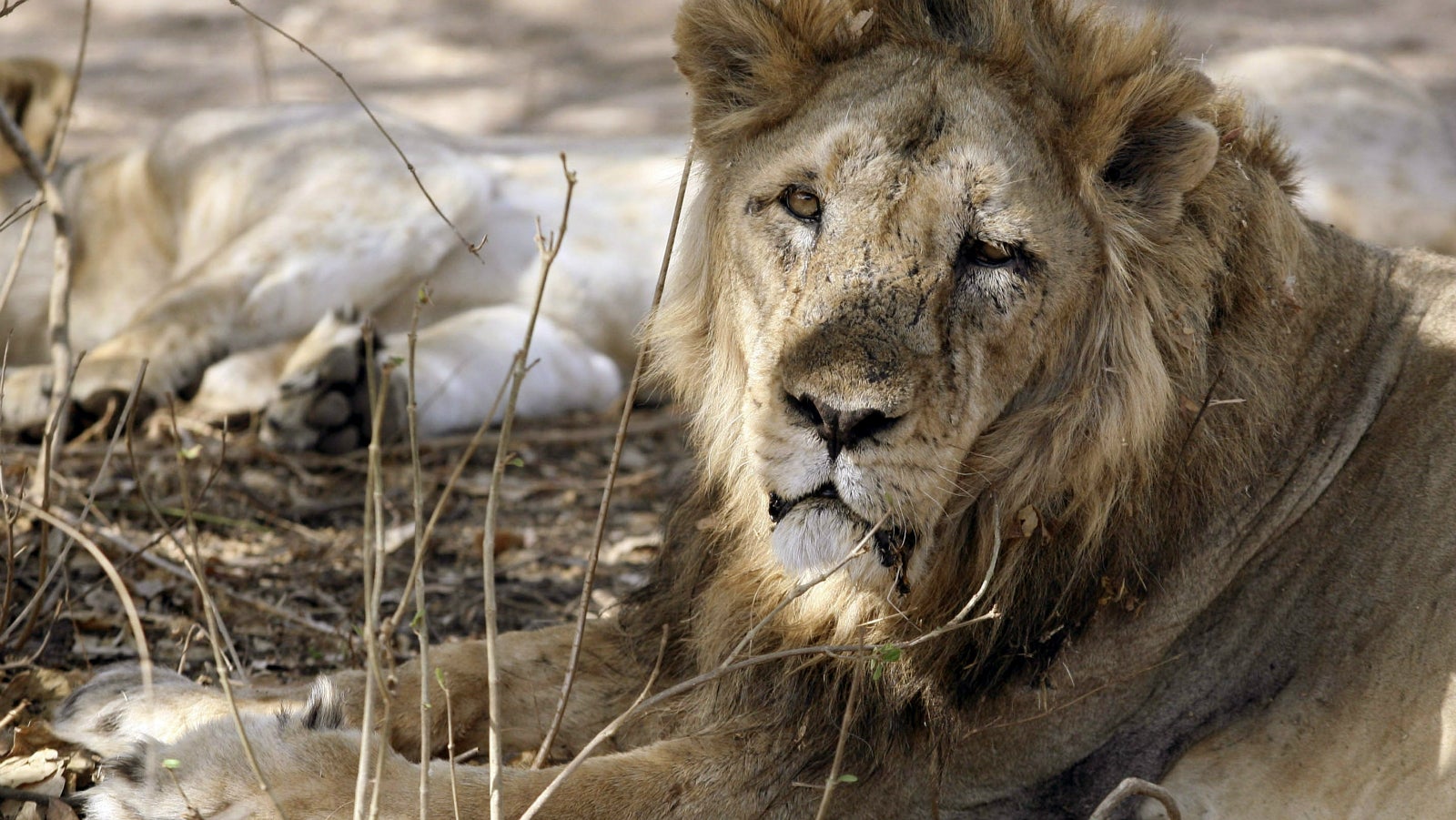A canine virus may be killing the last of India’s Asiatic lions
A deadly epidemic may be wiping out the world’s last few Asiatic lions.


A deadly epidemic may be wiping out the world’s last few Asiatic lions.
In the past one month alone, at least 23 of the big cats have died in the Gir Wildlife Sanctuary and National Park in the western Indian state of Gujarat. These deaths include those of three cubs and three adult females.
Initially, forest officials suspected some of these deaths to have occurred in a territorial battle. “This is a natural course of action among lions,” Gir forest official GK Sinha had said. Three adult male lions from another area entered the forest in September and killed the cubs in an incident of infighting, Sinha had said.
However, tests conducted at the Indian Council of Medical Research’s National Institute of Virology, Pune, have officially confirmed the presence of the deadly canine distemper virus (CDV) in at least four of the tissue samples extracted from the carcasses.
“CDV is extremely infective (sic). In Serengeti (national park in Tanzania) it killed a 1,000 lions in three weeks. Such epidemics are like natural catastrophes that come without any forewarning. Translocation is good for lion conservation and one has to only follow the supreme court’s order to implement it,” Ravi Chellam, a conservation scientist, told the Mint newspaper.
Environmentalists believe scavenging for food and sharing space with feral dogs has lead to the spread of CDV.
While the lion population has jumped from 411 in 2010 to 523 in 2015, and then to 600 lions by now, Gir’s 1,621 square kilometre area has remained constant. That leaves a decreasing amount of area per lion.
In the meantime, listed as a “critically endangered” species in 2000, the Asiatic lion’s status was upgraded to just “endangered” in 2008 after its numbers increased.
Emails to the ministry of environment, forest, and climate change and to the forest department of Gujarat remained unanswered.
Warning ignored
Foreseeing such mass deaths, the supreme court of India had, more than five years ago, ordered the shifting of some lions from Gujarat to Kuno Wildlife Sanctuary in Madhya Pradesh to keep them safe from such epidemics.
But the Gujarat government opposed this order. The state contended that the translocation couldn’t take place because of insufficient prey density. However, the supreme court cited various surveys to counter’s Gujarat’s opposition.
Further, dilly-dallying by both the Indian environment ministry and the Madhya Pradesh forest department made sure that the lions didn’t find a new home.
“The management has completely failed to comply with the supreme court orders. The habitat that these lions get in Gujarat is way less than what they actually need. Naturally, they are so crammed for space that they have ventured out of their territories, which has exposed them to diseases,” Ajay Dubey, a Madhya Pradesh wildlife activist who has filed a contempt petition in the supreme court over non-compliance, told Quartz.